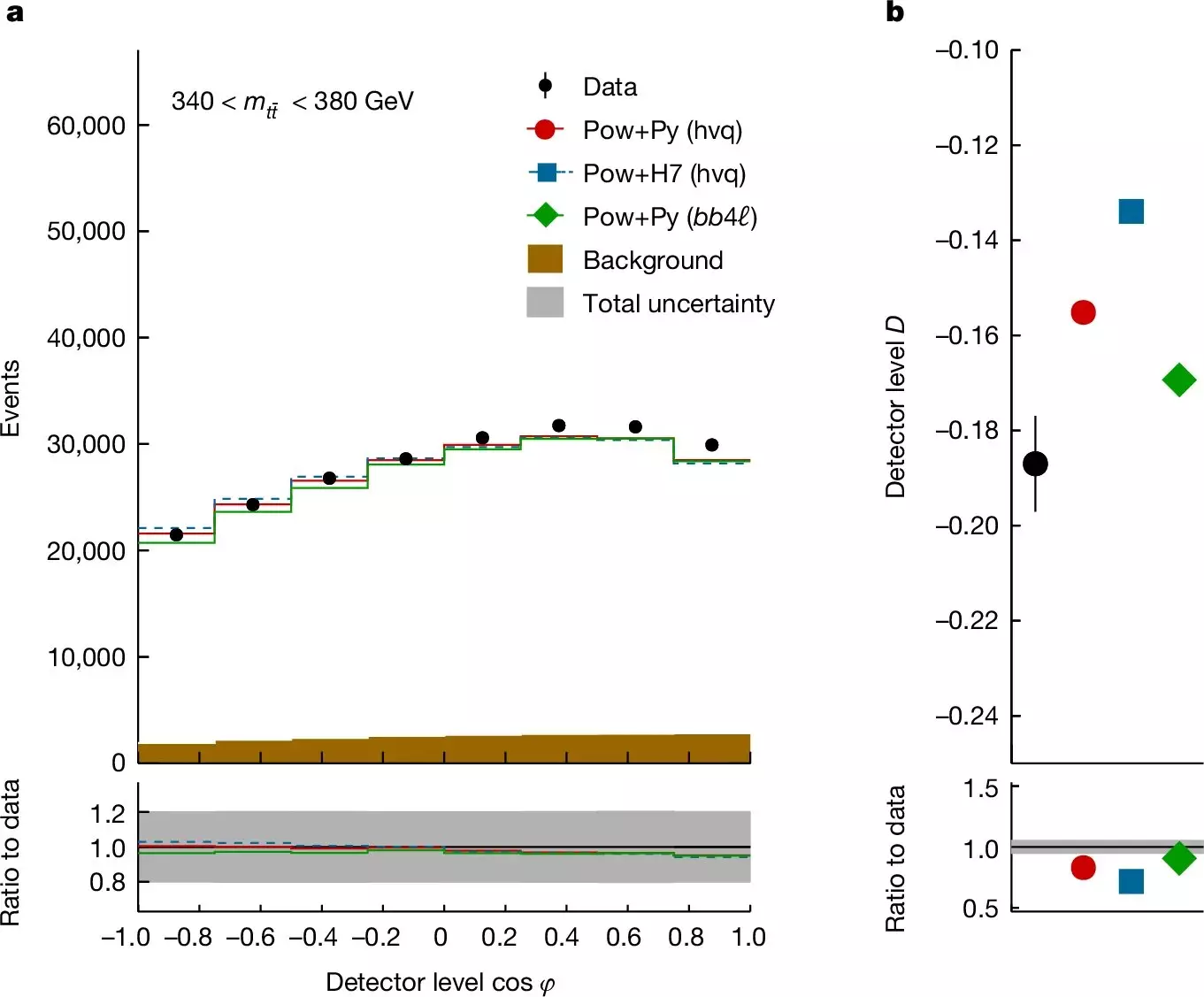Quantum entanglement represents one of the most puzzling and intriguing aspects of quantum mechanics, the foundational theory governing the behavior of particles at the atomic and subatomic levels. When two particles become entangled, their states are interconnected in such a way that the measurement of one particle instantaneously influences the state of the other, regardless of the distance separating them. This phenomenon defies our classical intuitions and has been corroborated through numerous experimental validations, cementing its role in the emergent field of quantum information science. Despite this, quantum entanglement has predominantly been studied under low-energy conditions and its implications in high-energy physics have remained largely uncharted.
A significant development in this domain occurred in September 2023, when researchers from the ATLAS collaboration achieved a groundbreaking milestone by observing quantum entanglement involving top quarks during experiments at the Large Hadron Collider (LHC). The top quark, recognized as the heaviest fundamental particle, exhibits unique behaviors that can be analyzed to glean insights about entanglement. This achievement not only shines a light on entanglement in a novel particle system but also offers a fresh vantage point from which physicists can explore the intricate relationships between fundamental particles.
The Significance of the Nobel Laureates’ Contributions
The importance of these recent findings can be appreciated in light of the historical context provided by the 2022 Nobel Prize in Physics, awarded to Alain Aspect, John F. Clauser, and Anton Zeilinger. Their collective work laid the foundational groundwork upon which current advancements in quantum phenomena are built, particularly concerning entangled photons. Their experiments confirmed key theoretical predictions made by John Bell regarding the nature of entangled states. Now, with the LHC’s latest observations, we witness a decisive leap into studying entanglement with previously unattainable energy levels, hence marking a transformative phase in particle physics.
To probe the entangled states of top quarks, the ATLAS and CMS collaborations implemented a method that involved examining proton-proton collisions at an extraordinary energy threshold of 13 teraelectronvolts. By focusing on pairs of top quarks produced with minimal relative particle momentum, researchers could identify a strong entanglement in the spins of these quarks. This innovative strategy led to successful measurements of angular separations in the decay products emitted from the quarks, allowing scientists to infer the degree of spin entanglement with high statistical certainty.
Furthermore, the CMS collaboration extended its examination to scenarios involving top quarks generated with higher momentum, revealing entanglement even under these conditions. This comprehensive approach not only analyzes conventional configurations but also challenges classical notions of communication and information transfer—a critical step in advancing our understanding of particle interactions at quantum levels.
Implications for Future Research
The implications of these discoveries are vast. As Andreas Hoecker from ATLAS emphasized, the newfound capability to observe entanglement in top quarks enables physicists to conclude rigorous tests of the Standard Model of particle physics, while also exploring potential phenomena beyond current theoretical frameworks. The rich data samples that both collaborations anticipate will facilitate extensive explorations into the quantum realm and deepen our understanding of the universe’s fabric.
Moreover, Patricia McBride from CMS pertinently noted that this pioneering work not only provides a testing ground for established theories but may also unveil avenues for new physics, energizing the scientific dialogue around quantum mechanics and high-energy particle interactions. The intersection of quantum entanglement and particle physics might become a cornerstone of research in the upcoming years.
Conclusion: A New Era of Quantum Exploration
The pioneering observations of quantum entanglement in top quarks at the LHC signify a transformative breakthrough that transcends conventional understandings of quantum mechanics. As researchers continue to dissect the relationships between entangled particles, we stand at the threshold of a new era in physics. With unprecedented energy levels and innovative methods paving the way, the cosmos may soon divulge deeper truths about its fundamental nature—a testament to the human quest for knowledge and understanding within the enigmatic world of quantum mechanics.



Leave a Reply